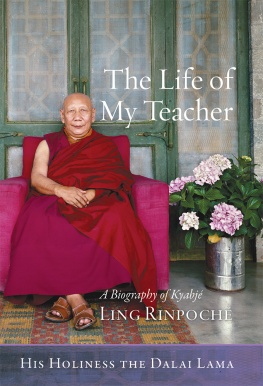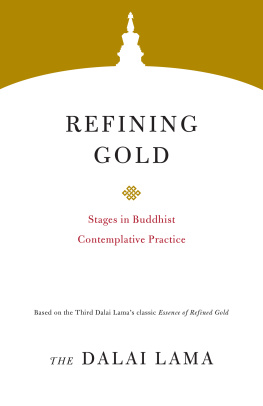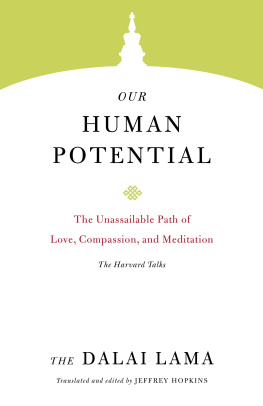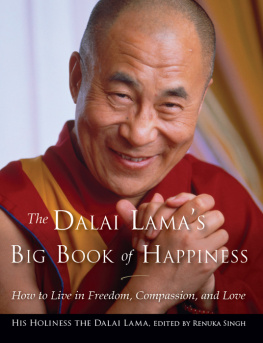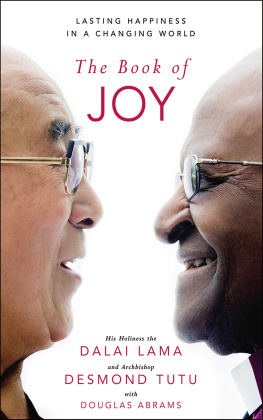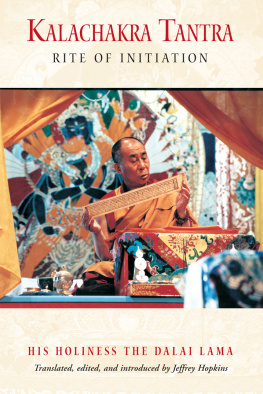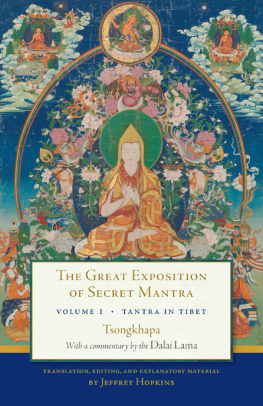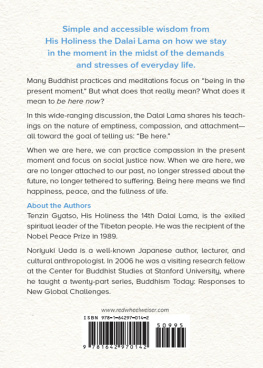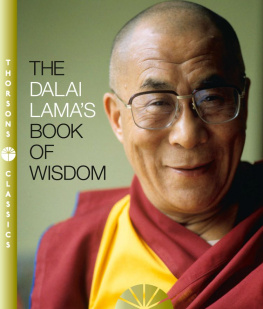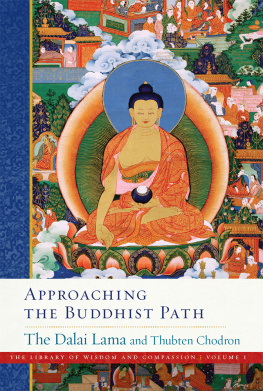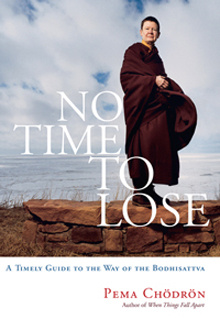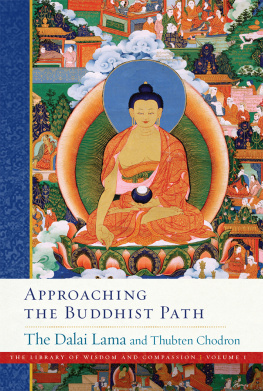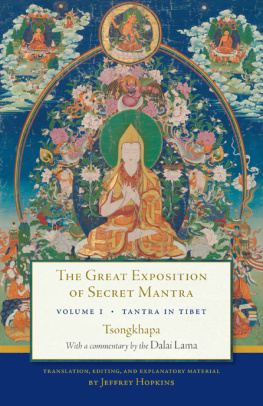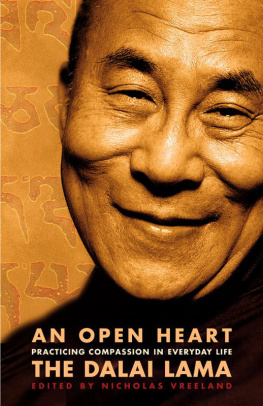B. Alan Wallace, president, Santa Barbara Institute for Consciousness Studies
I teach my students about bodhisattva practice in terms of the three main aspects of the path: determination to be free, bodhichitta, and correct view. I am thrilled to see that we now have Tsongkhapas pithy and profound verses on this topic along with the Dalai Lamas lucid commentary. This is a short, readable book and a great introduction to Mahyna practice. It includes Tsongkhapas original text in Tibetan, so it could also be used quite effectively as a text for teaching the translation of classical Tibetan.
Guy Newland, chair, Department of Philosophy and Religion, Central Michigan University
Joshua Cutler, executive director, Tibetan Buddhist Learning Center; editor in chief, TheGreat Treatise on the Stages of the Path to Enlightenment
(Lam Rim Chen Mo)
Preface
I am happy that Wisdom Publications is publishing His Holiness the Dalai Lamas commentary on Three Principal Aspects of the Path, by J Tsongkhapa, which I had the fortune to simultaneously translate during the teaching itself, and later prepare this written translation for the Library of Tibetan Works and Archives (LTWA) with the help of my friend Jeremy Russell. Tsongkhapa taught this short text to Tsakho Onpo Ngawang Dakpa in a place called Gyamo Rong in eastern Tibet.
The three principal aspects of the path are the axis or lifeline of all the sutric and tantric practices that you undertake. In other words, it is important that your practice be influenced by the three aspects: renunciation or the determination to be free, bodhichitta or the mind of enlightenment, and right or correct view. For when your practice is influenced by renunciation it becomes a cause for achieving liberation (nirvana), when it is influenced by bodhichitta it becomes a cause for achieving omniscience (buddhahood), and when it is influenced by correct view it becomes an antidote to the cycle of existence (samsara). In the absence of these main aspects of the path, even if one is well versed in the five subjects of learning, even if one is able to remain in a meditative state for many eons, even if one possesses the five clairvoyances, and even if one has achieved the eight great accomplishments, one will not be able to go beyond this cycle of existence.
The three principal aspects of the path are the essence of all the scriptures of the Buddha. The meaning of the Buddhas teachings and the commentaries on them are included in the stages of the path of three types of individuals the lowest, who is concerned with a higher rebirth; the medium, who is concerned with liberation or nirvana; and the highest-capacity individual, who is concerned with the bodhisattva motivation of becoming a buddha to benefit other beings. This is so because the purpose of all the scriptures containing the Buddhas teachings and their commentaries is really to help followers achieve buddhahood. To attain that state of omniscience, one should practice the twofold practice of skillful means and wisdom, within which the main practice is bodhichitta and correct view (wisdom understanding emptiness). In order to cultivate these two, one should have first of all cultivated a deep sense of disgust toward the superficial marvels of the cycle of existence, and should have developed genuine renunciation the wish to come out of samsara. In the absence of this, it is impossible to develop the great compassion that aspires to liberate other sentient beings from the cycle of existence. Hence renunciation is a must.
Bodhichitta is the main practice of accumulation of merit for achieving the body of the Buddha (rupakaya), and correct view is the main practice for achieving the truth body (dharmakaya). Moreover, in the beginning, in order to convince ones mind to embrace Dharma, one needs renunciation. To ensure that the Dharma practice becomes a Mahayana path of practice, one needs bodhichitta, and to eliminate completely the two obscurations, correct view is a must. Thus these three are known as the three principal aspects of the path. This way of practicing all the essential points of the path by including them in these three principal aspects is a very special instruction that Manjushri gave directly to Tsongkhapa.
Ven. Lhakdor, Director, LTWA
Part 1

Three Principal Aspects of the Path by J Tsongkhapa


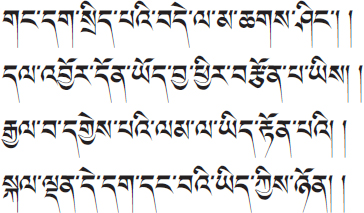
I pay homage to the foremost venerable lamas
I will explain, as well as I can,
the essence of all the teachings of the Conqueror,
the path praised by the Conquerors children,
the entrance for the fortunate desiring liberation.
Those who are not attached to the joys of the cyclic existence,
who strive to make meaning of this leisure and opportunity,
who rely on the path pleasing to the Conqueror
those fortunate ones, listen with a clear mind.
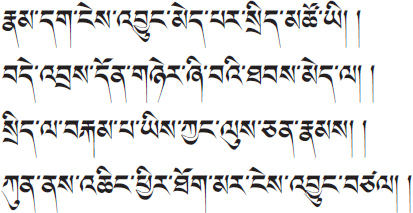
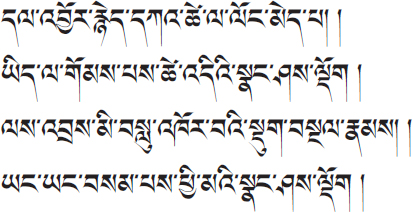
Without a pure determination to be free,
there is no means to achieve peace owing to fixation on the pleasurable effects of the ocean of existence.
Embodied beings are thoroughly bound by craving for existence;
therefore, in the beginning, seek a determination to be free.
Contemplating how freedom and fortune are difficult to find,


